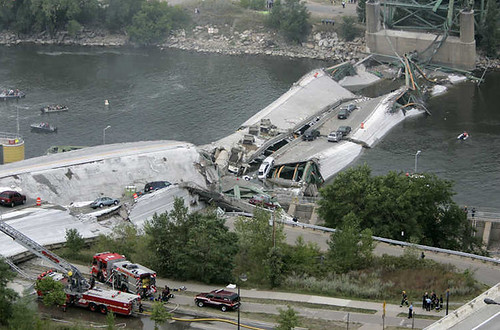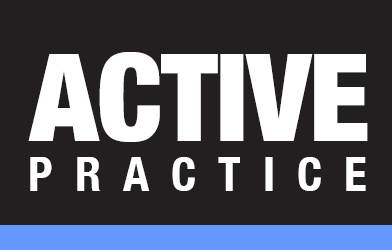Prepare for Disaster
/In the wake of a local disaster, I am saddened by the tragic consequences for so many families. As I reflect on what happened, my thoughts turn what we all might do minimize the potential harm to those close to us. I urge you to take a few steps now to prepare for potential disasters. Here are some of the basics.
Never a Good Time
The collapse yesterday of the 35W freeway bridge in Minneapolis serves as a grim reminder that our lives may be disrupted suddenly. The names of those who were injured or died have not been released, so I do not yet know whether they include any acquaintances. I am grateful for no bad news yet about family and friends and feel sorrow for the many families who are not so fortunate.
Our lives are busy. There never seems to be a good time to prepare for possible disasters. They are not immediate problems and do not demand attention. But a nearby tragedy pushes the topic to the front of our minds.
I was cycling under the 35W bridge less than 24 hours before it collapsed. When I heard the news, I made two resolutions: 1) Make another contribution to the Red Cross, an organization that provides so much immediate and continuing aid to disaster victims; 2) Take action on a Family Disaster Plan (PDF). I encourage you to do the same.
Office disasters are not in the same league with other disasters, yet they, too, can strike families hard. A firm can go out of business if not well prepared for a fire, theft or other event that destroys computer equipment, files and data. That can translate into severe disruption of people's lives.
Though now probably is not a good time, I encourage you to take at least a few actions to prepare for disasters that could affect your family and your office.

Family Disaster Plan
The Red Cross publishes a Family Disaster Plan you can download here. Even if you are never directly affected by a disaster, taking these steps can bring peace of mind to you and those close to you. Please consider doing these three things now:
-
Write down several "family contacts" and their phone numbers on an emergency contact card. Include one person who is out-of-state since it may be easier to complete long-distance calls after a disaster. Put a copy of this list of names and phone numbers into each family car.
-
Pick two places to meet: 1) Right outside your home in case of a fire or other emergency. 2) Outside your neighborhood in case you cannot return home. We chose the house of friends and the more distant house of relatives.
-
Stock some basic supplies - first aid kit, 3 gallons of water per person, battery or crank radio, flashlights - and talk about what to do in the event of disasters that are most likely in your area.
The Red Cross plan has more specific information, but these three basic steps are well worth doing now.
The mobile phone systems in our area were overwhelmed yesterday by people calling to check on each other, so do not rely entirely on local mobile phone numbers for your family contacts. Include some local and out-of-state land line phone numbers. If there is a disaster, you can leave word for family members by calling your family contacts.
You may also want to include on your emergency contact the Email addresses of your contacts and instructions on how to access your Email via Webmail. In a disaster situation if you have access to the Internet, you can get the word out quickly to those close to you if you have their Email addresses.
Office Disaster Plan
Though office disaster preparation is less significant than planning for other disasters, it deserves periodic attention. Now is as good a time as any to review your precautions. This article does not attempt to cover the the subject of disaster recovery planning comprehensively but rather to focus on a few key steps:
-
Backup data every day using two independent systems.
-
Securely transfer backups to two off-site locations, typically:
-
A professional Internet backup company site, and
-
Rotated tapes or drives, or secure file transfers to an off-site computer
-
-
Perform a test restore of at least one file from the backup media each month.
-
Protect computers using uninterruptible power supplies (UPS).
-
Synchronize vital data and documents to a notebook computer loaded with software to access them.
Comprehensive office disaster planning involves many more actions. These five steps, however, can minimize the short term and long term disruption of your office by a disaster.
The tragic 35W bridge collapse can teach us to guard against single points of failure. That bridge had a non-redundant design. Following the collapse of the non-redundant Silver Bridge over the Ohio River in 1967, causing 46 deaths due to a single defective part, engineers have designed bridges so that the failure of a single piece would not cause the entire structure to collapse. See: I-35W Bridge by John A. Weeks III.





